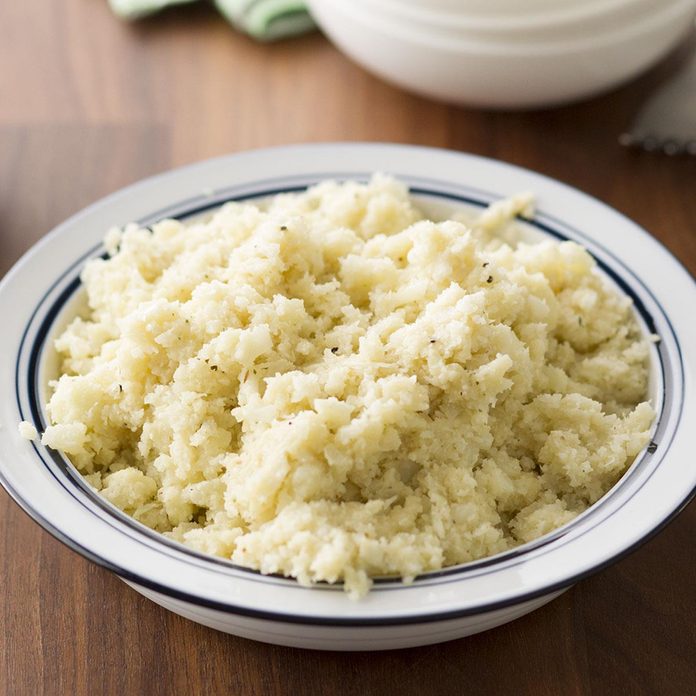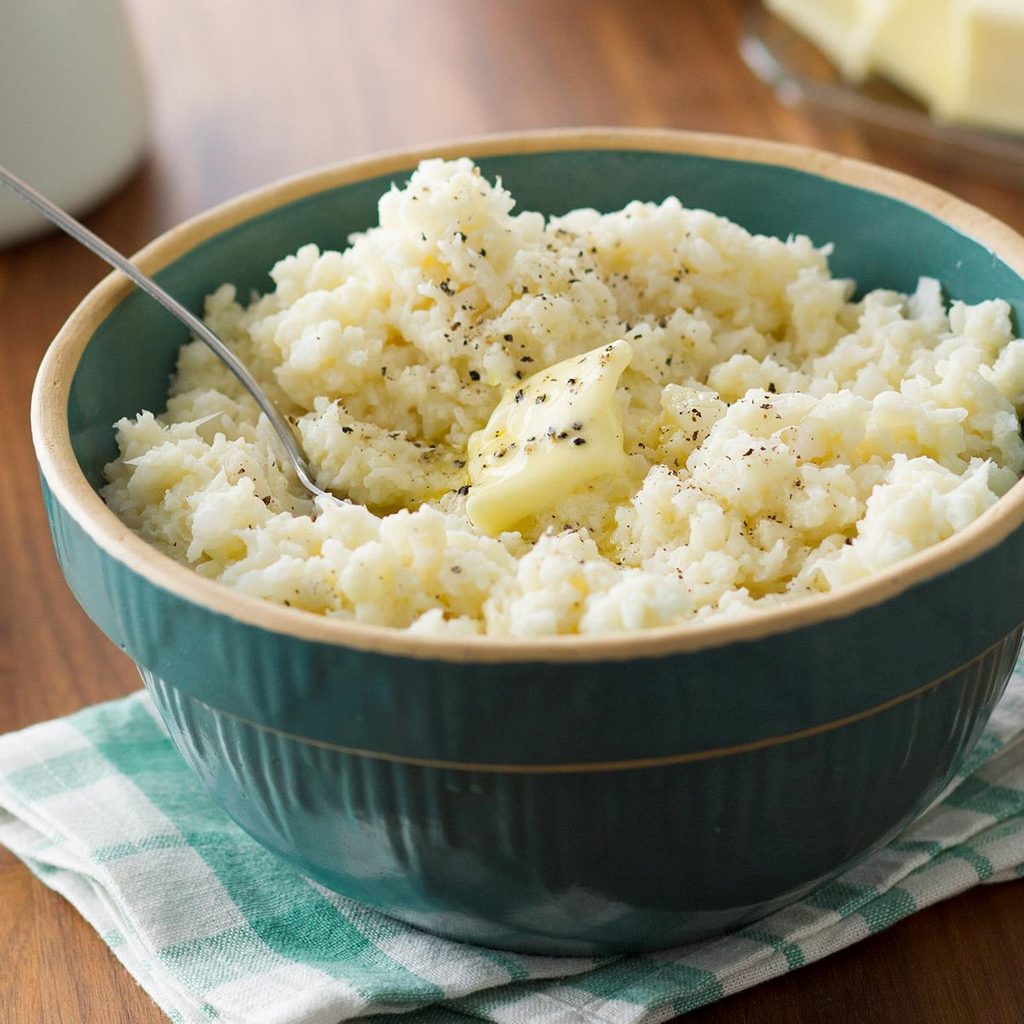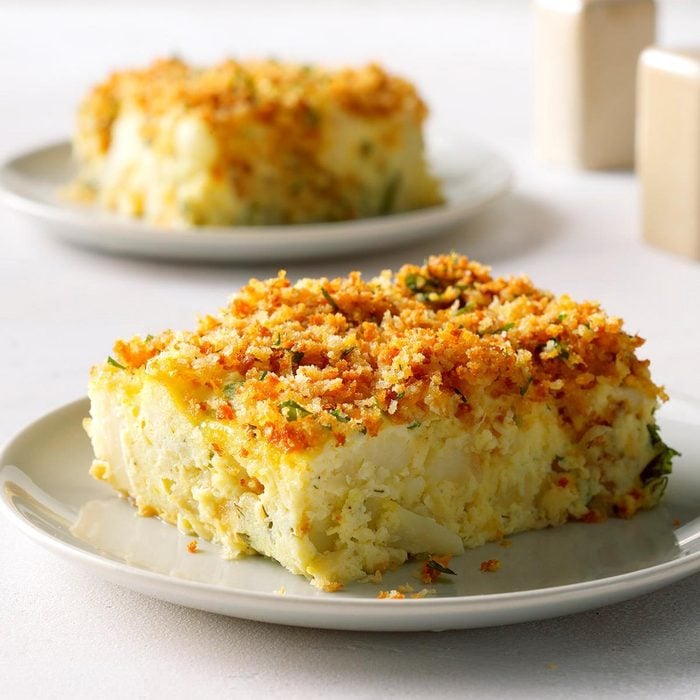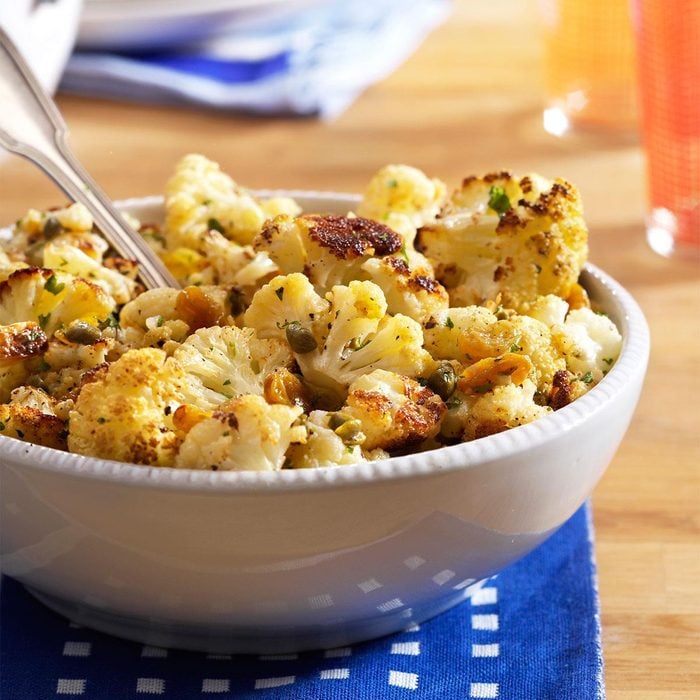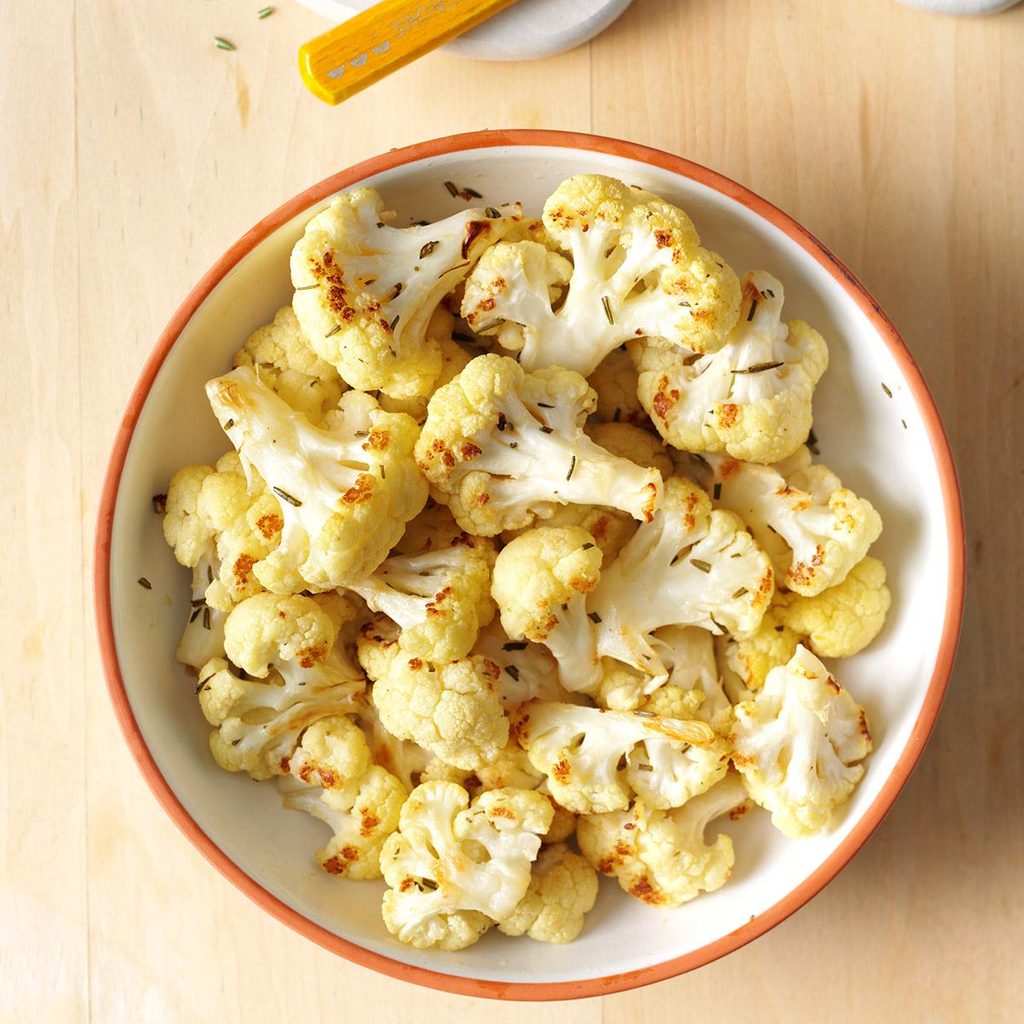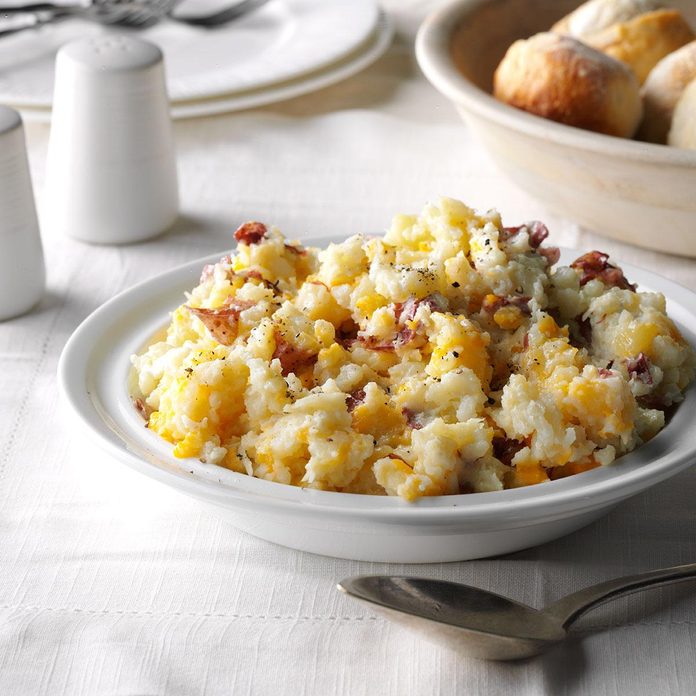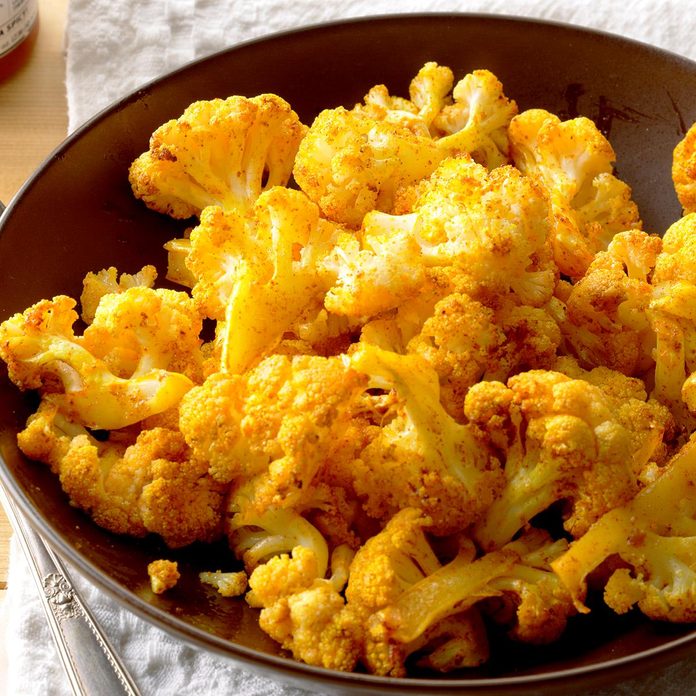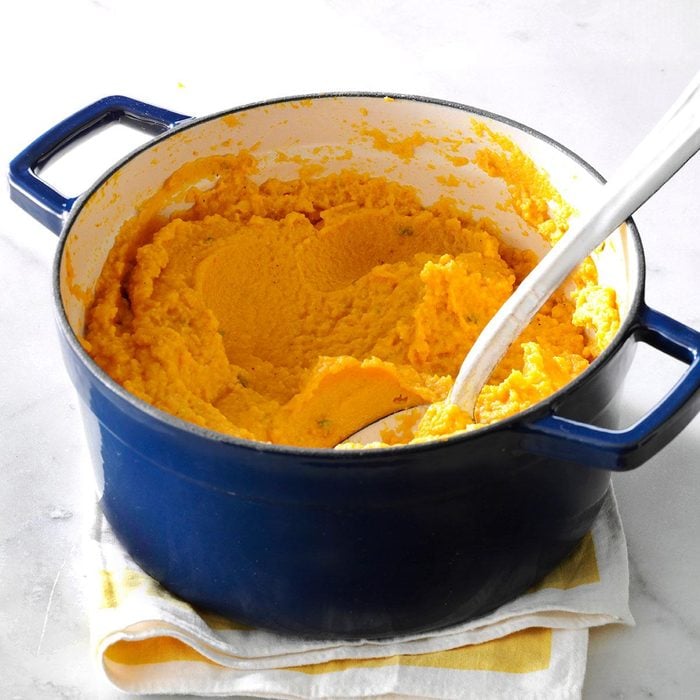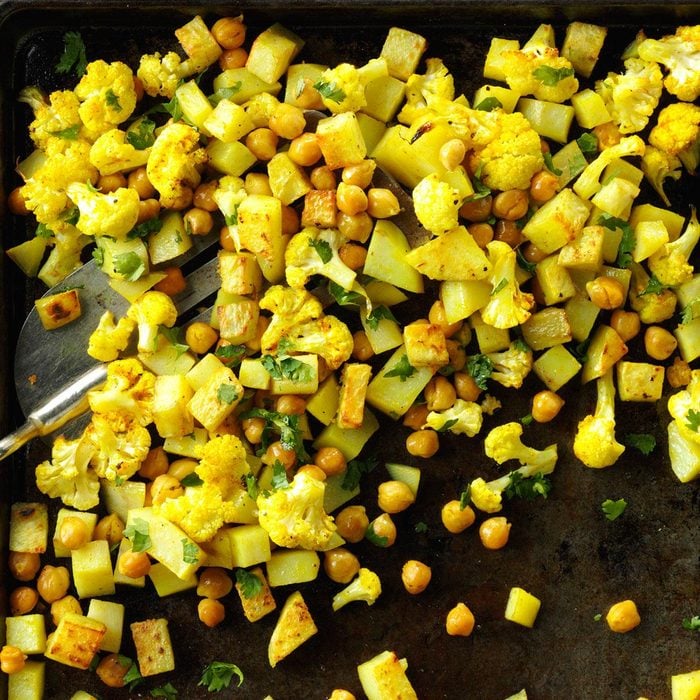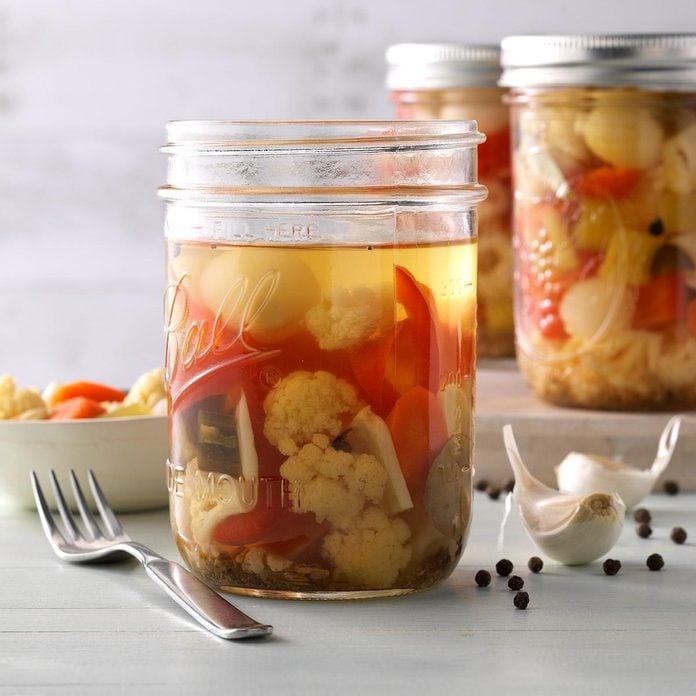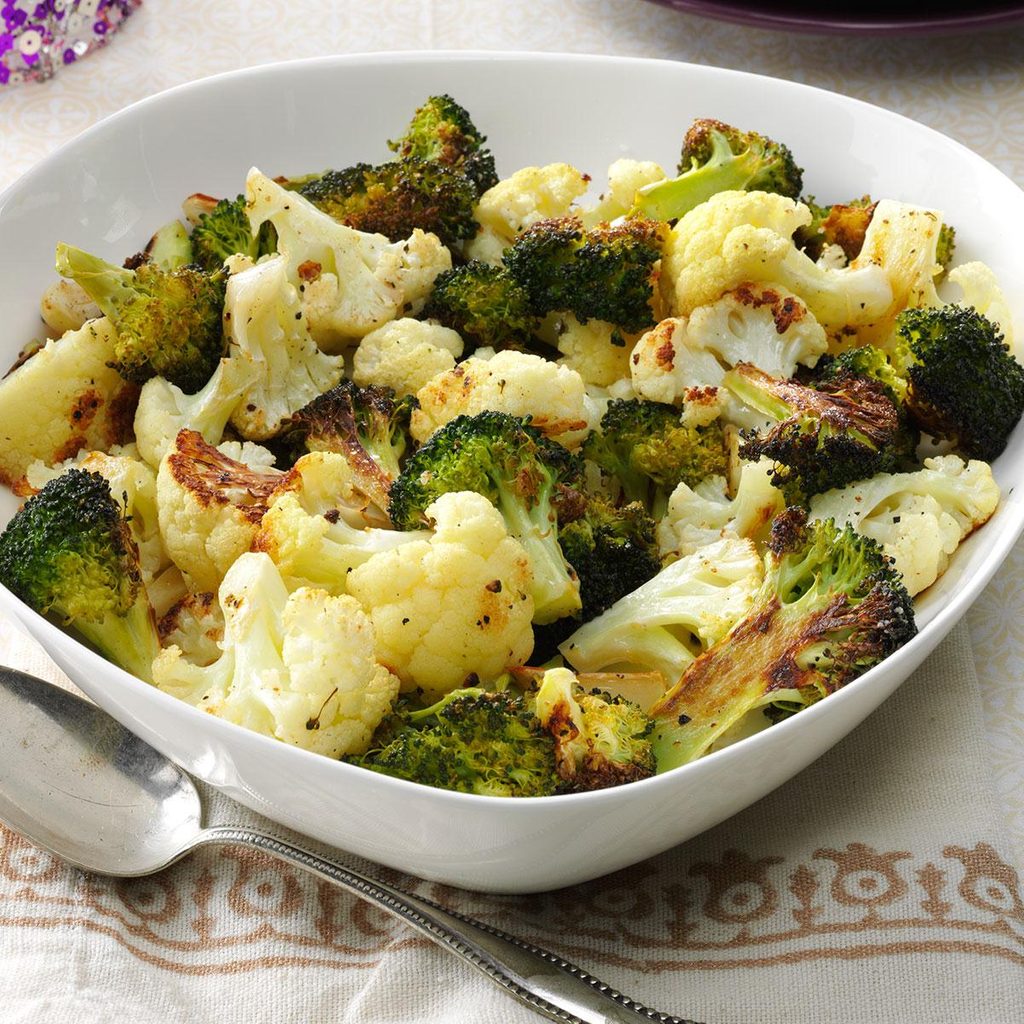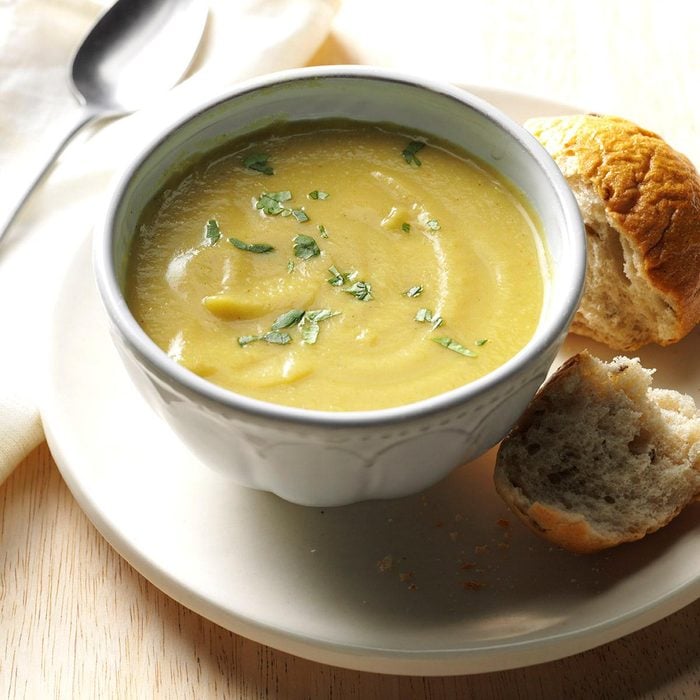A crisp, fresh head of cauliflower is much more than a simple side dish. With a little prep work, cauliflower can be a substitute for plant-based chicken wings, grated for rice or served whole as an entree. Here’s how to store cauliflower until it’s time to cook!
To help you find the best alternative pizza crusts, we sampled all the frozen pizzas we could find. Don’t miss our top picks for cauliflower pizza crusts.
Why Is Cauliflower Wrapped in Plastic?
The produce section at your local grocery store is filled all kinds of fresh eats, but while you’re perusing, make a mental note on how the heads of cauliflower are stored. While many fresh vegetables—like broccoli—can be found misting out in the open, you’ll find the heads of cauliflower tightly wrapped in plastic. Reddit and Quora users have some ideas as to why.
First, plastic wrap acts as a barrier between producer and customer. Depending on where and when the product was harvested, when it arrives at the grocery store and how long its shelf life is, some producers keep their vegetables in plastic to avoid contamination. Second, cauliflower isn’t thought to be as hardy in its raw form as broccoli. The florets crumble easily and are known to brown and discolor. That layer or two of plastic wrap keeps the cauliflower in one piece—and keeps moisture out.
How to Store Cauliflower
The key to keeping your cauliflower fresh for the entirety of its shelf life starts at the store, says EatingWell. Look for heads of cauliflower that are white and bright; avoid any with breaking leaves, florets or any browning or discoloration on the heads. The leaves should be crisp and green, and the head of the vegetable as a whole should be firm and tightly packed together.
Then, once you bring your groceries home, choose between storing your cauliflower in the refrigerator or freezer.
In the Refrigerator
Start by loosening up the knot holding the plastic wrap around the veggie. You still want to keep it covered, but you’ll want to give the cauliflower some room to breathe. After giving it some space for air circulation, store the veggie stem-up in the fridge. If you can, try to avoid washing your cauliflower before storage to prevent moisture retention. This can lead to browning and decrease the usual shelf life of three to five days.
In the Freezer
If you want to freeze cauliflower, start by washing and cutting off the florets—similar to how you’d prep to freeze broccoli. Add them to a pot of boiling water and let them cook for three minutes before blanching them, or dousing them in a bowl of freezing ice water. Drain well, pat dry and place the florets out on a baking sheet to store in the freezer until each piece is individually frozen. Then, transfer them to a storage bag and keep in your freezer anywhere from 10 to 12 months.
If all of this cauliflower talk is making you hungry, check out this recipe for homemade cauliflower soup. It’s cheesy, warm and filling!
Genius Ways to Cook with Cauliflower
Cauliflower CasseroleRelish the goodness of homemade Cauliflower Casserole with this effortless and flavorful recipe. This dish combines easy preparation with delicious comfort, perfect for family meals or any special event.
Garlic Asiago Cauliflower RiceThe garlic seasoning and Asiago really pack a punch, making this five-ingredient low-carb side dish a real weeknight winner. —Colleen Delawder, Herndon, Virginia
Here's more on
how to make cauliflower rice like a pro.
Roasted Cauliflower & Red Pepper SoupWhen cooler weather comes, soup is one of our favorite meals. I developed this recipe for my husband and me. I wanted it to be a healthier version of all the cream-based soups out there. After a bit of trial and error, this is the keeper. —Elizabeth Bramkamp, Gig Harbor, Washington. Try these
low-carb cauliflower recipes.
Creamy Mashed CauliflowerFor weeknight dinner I want something fast, easy and not ordinary. This
mashed cauliflower side dish is a perfect substitute for mashed potatoes.
Roasted Buffalo Cauliflower BitesTry these savory bites for a kickin' appetizer that's tasty and healthy, too! —Emily Tyra, Traverse City, Michigan
Learn how to
store cauliflower the right way.
Cauliflower Dill KugelI enjoy cauliflower and
kugel, so it made sense to combine the two into one special dish. The ricotta cheese adds a distinctive creaminess and lightness. —Arlene Erlbach, Morton Grove, Illinois
Cauliflower au GratinCount on this dish to make new vegetable converts. Whenever I serve it, people ask me for the recipe. Sometimes I’ll substitute broccoli for all or half the cauliflower, and the green veggie tastes just as good! —Jacki Ricci, Ely, Nevada
Browned Butter Roasted CauliflowerWhen I was growing up, my mother (who insists on loving some of the least popular vegetables) always raved about how deliciously sweet and tender cauliflower can be. Here, the briny capers, lemon juice and sweet raisins allow the caramelized, nutty cauliflower to shine. —Gina Myers, Spokane, Washington
Veggie Mac and CheeseTake a decadent family fave, add in a variety of vegetables, and you've got a dinner worth being excited about: veggie mac and cheese.
Slow-Cooker Creamy Cauliflower SoupI love indulgent cream soups but not the fat that goes along with them. In this healthier version, the soup's velvety texture makes it feel rich and the spicy kick warms you up in a flash. —Teri Rasey, Cadillac, Michigan
Roasted Rosemary CauliflowerRoasting the cauliflower really brings out its flavor in this side dish. Even folks who aren't cauliflower lovers like it this way. —Joann Fritzler, Belen, New Mexico
Cauliflower & Tofu CurryCauliflower, garbanzo beans and tofu are each subtle on their own, but together they make an awesome base for curry. We have this recipe weekly because one of us is always craving it. —Patrick McGilvray, Cincinnati, Ohio
Roasted Cauliflower with Tahini Yogurt SauceI created my own cauliflower recipe in honor of my grandma, who taught me to love this delicious and healthy vegetable. She cooked with it all the time.—Lidia Haddadian, Pasadena, California
Broccoli-Cauliflower Chicken CasseroleA chicken, broccoli and rice casserole is one of our favorite comfort foods. I make my easy variation in the slow cooker. You can easily substitute whatever cheese you prefer. I sometimes use dairy-free cheese to create a more paleo-friendly dinner. The dish is also delicious sprinkled with a simple bread crumb topping. —Courtney Stultz, Weir, Kansas
Cheese Smashed PotatoesWho doesn't like mashed potatoes? Try this slimmed-down dish with any entree. —Janet Homes, Surprise, Arizona
Smoky Cauliflower BitesThese healthy little treats work well as a side or as fun
bite size appetizers. Roasting the cauliflower adds deep flavor and gives it an irresistible crunch. —Courtney Stultz, Weir, Kansas
Pumpkin & Cauliflower Garlic MashI wanted healthy alternatives to my family's favorite recipes. Pumpkin, cauliflower and thyme make an amazing dish. You'll never miss those plain old mashed potatoes. —Kari Wheaton, South Beloit, Illinois
Roasted Curried Chickpeas and CauliflowerWhen there’s not much time to cook, try roasting potatoes and cauliflower with chickpeas for a warm-you-up dinner. It's a filling meal on its own, but you can add chicken or tofu to the sheet pan if you'd like. —Pam Correll, Brockport, Pennsylvania
Cream of Cauliflower SoupThis cream of cauliflower soup is a comforting blend of tender cauliflower, rich broth and cheddar cheese, creating a hearty, flavorful dish. Easy to prepare and customizable, it's ideal for cozy dinners or light lunches.
GiardinieraSweet and tangy, this Italian condiment is packed with peppers, cauliflower, carrots and other crisp-tender veggies. It’s perfect to offer alongside pickles or olives on a relish tray. —Taste of Home Test Kitchen, Milwaukee, Wisconsin
Roasted Broccoli & CauliflowerWhenever we make a time-consuming entree, we also prepare this quick broccoli and cauliflower side. The veggies are a good fit when you’re watching calories. —Debra Tolbert, Deville, Louisiana
Mashed Cauliflower au GratinUnless someone tells you, you might not know you're eating cauliflower. Even my grandchildren love this buttery, cheesy, creamy dish that tastes like mashed potatoes. —Sandie Parker, Elk Rapids, Michigan
Tuscan Cauliflower SoupA classic Tuscan soup has lots of potatoes, but I make mine the low-carb way with cauliflower. Turns out, it has a heartier flavor. —Heather Bewley, Bemidji, Minnesota
Coconut Curry Cauliflower SoupWhen I'm in need of comfort food, I stir up a velvety batch of this Asian-spiced soup. Then I finish it with a sprinkle of cilantro over the top. —Elizabeth DeHart, West Jordan, Utah
Cauliflower Potato SaladCauliflower in potato salad? You bet, along with carrots, olives and other yummy surprises. —Mike Schulz, Tawas City, Michigan
























